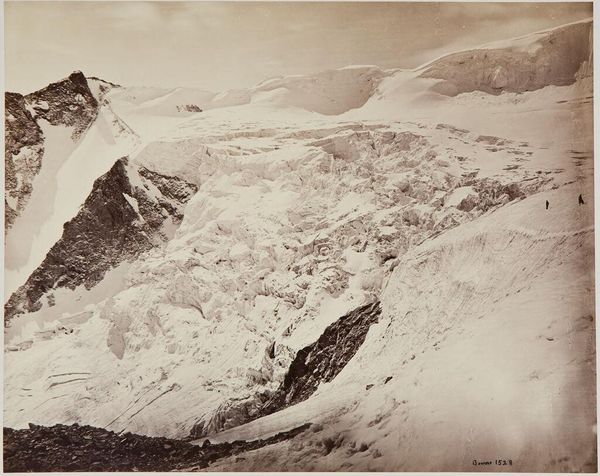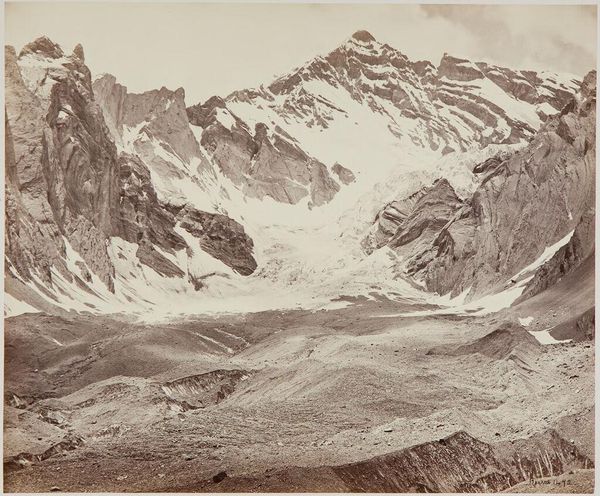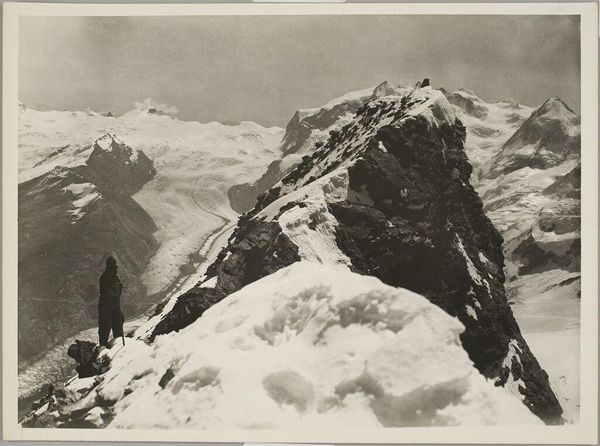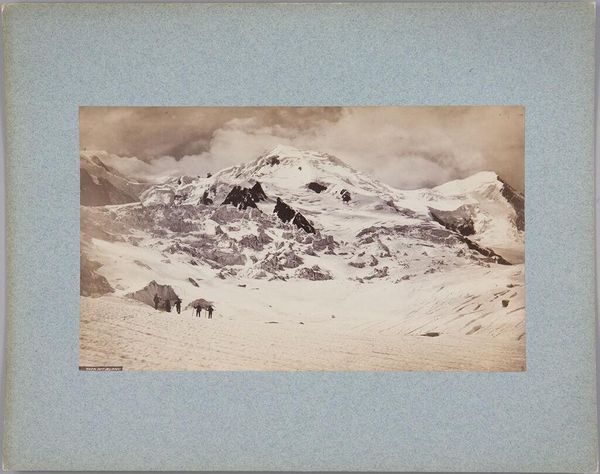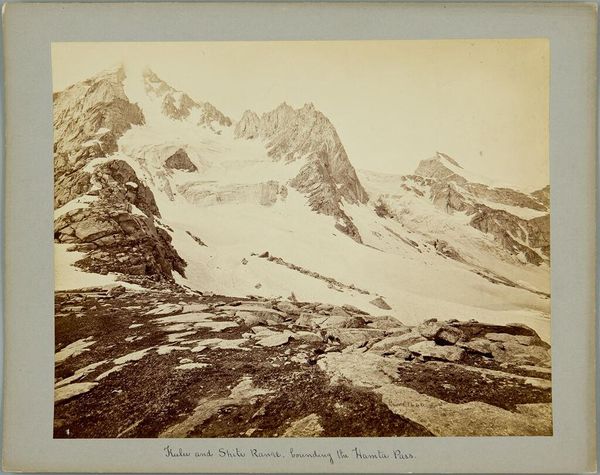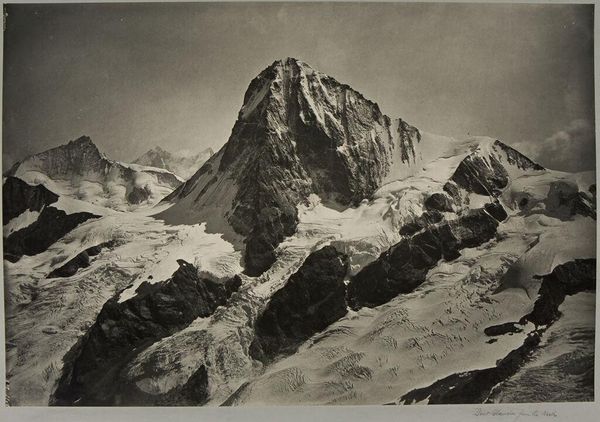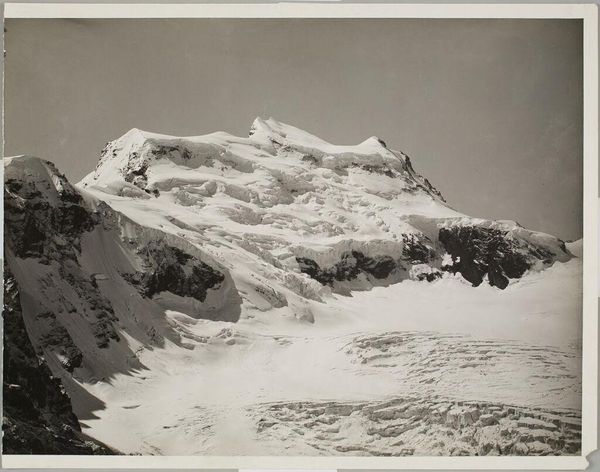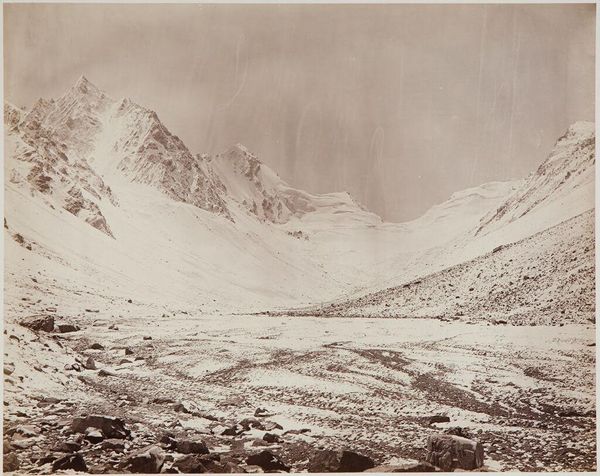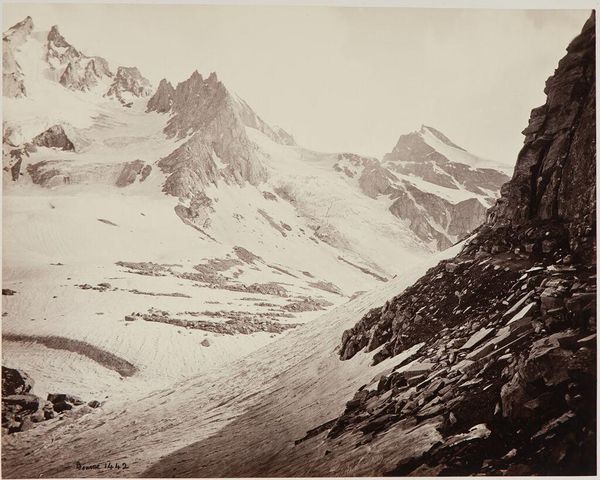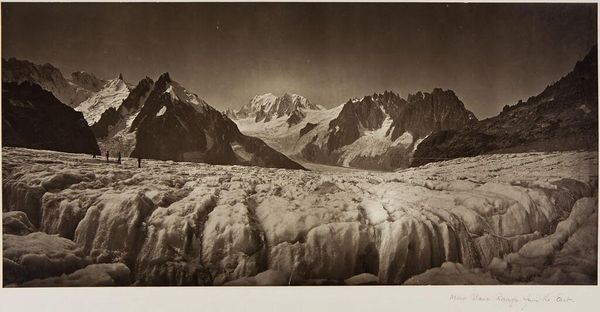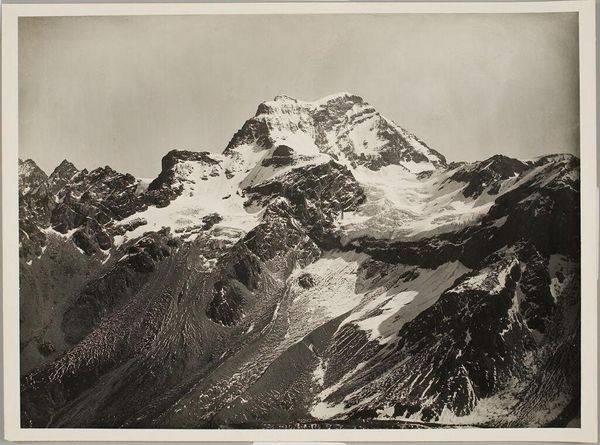
Gezicht op de Dôme du Goûter vanaf de Grande Muette in het Mont Blanc Massief 1861 - 1862
0:00
0:00
Dimensions: height 232 mm, width 406 mm, height 395 mm, width 503 mm
Copyright: Rijks Museum: Open Domain
This photograph of the Dôme du Goûter, taken by the Bisson Frères in the 1850s or early 1860s, is a fascinating example of early photography and its relationship to landscape and labor. The Bisson brothers were known for their large-format landscape photographs, and this image is a testament to their technical skill and artistry. What’s important to consider is how this image was made. This wasn’t simply a matter of pointing and shooting. It was a major expedition, involving heavy equipment and significant physical risk. The collodion process, which the Bissons used, required coating a glass plate with a light-sensitive emulsion, exposing it in the camera while still wet, and then developing it immediately. Doing this at high altitude, in freezing conditions, was an extraordinary achievement. The final print, made from the glass negative, captures the textures of the snow and ice with remarkable clarity. Considered in this light, the photograph is not just a representation of a mountain, but also a record of human effort and ingenuity. It reminds us that all images have a material basis, and that the most compelling art often involves a degree of technical mastery and physical endurance.
Comments
No comments
Be the first to comment and join the conversation on the ultimate creative platform.
